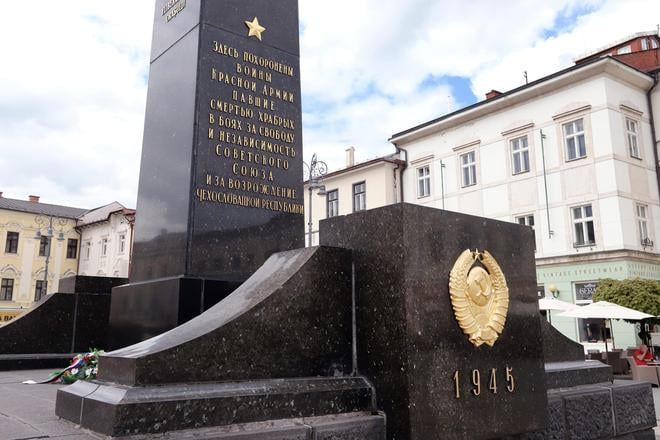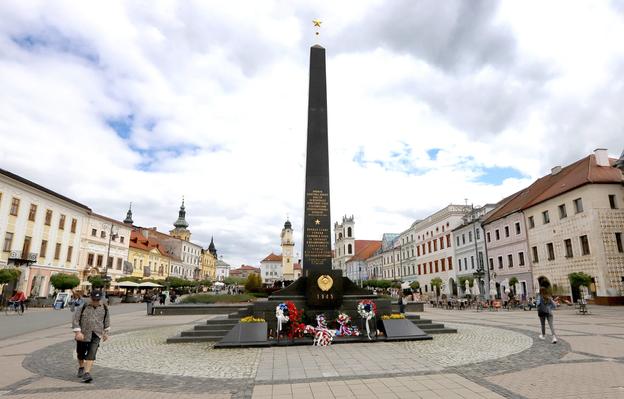A Red Army monument known as the Black Obelisk, located in Banská Bystrica, a city in central Slovakia, is a symbol of Russian propaganda, says a local activist.
Bearing the hammer and sickle emblem of the Soviet Union, the memorial is dedicated to the soldiers of the Red Army who helped liberate Slovakia from its wartime fascist regime. But "Nie V Našom Meste" (Not In Our Town) activist Andrej Čierny says it can more accuratly be regarded as a tool of Soviet – and now Russian – state propaganda, the My Bystrica website writes.
“In 1945, a large portion of central Slovakia and the areas around Banská Bystrica and Zvolen were liberated from the German army mainly by the forces of the Romanian Royal Army. They were fighting jointly with the Red Army; however, the Romanians were the ones who liberated the territory south of Low Tatras,” says Čierny.
According to him, the 78-year-old monument, which dominates the mediaeval centre of Banská Bystrica, elides and mutilates the historical message of liberation from fascism. Čierny cites an expert analysis by The Institute of Military History (VHÚ) to support his views.
It is owned by the Russian Federation and Banská Bystrica only looks after the obelisk.
Built shortly after liberation
The present-day Russian state, which claims ownership of Soviet memorials across Europe, has used the memory politics associated with them to advance its own agenda, especially during its ongoing war against Ukraine. Ukraine was part of the Soviet Union, and a signifiacnt proportion of the Red Army troops who died in World War II were Ukrainian.
The Black Obelisk monument was designed by Kyiv-born architect and Red Army lieutenant Samuel Mironovich Vaistein in 1945 and is located in Banská Bystica's central SNP Square.
An inscription in Russian says that fallen Red Army soldiers are buried at the site, although their remains were exhumed and reburied at a military cemetery in Zvolen in the 1950s.
In the 1990s, at the initiative of the Romanian authorities and with the consent of the Russian side, a special inscription documenting the participation of Romanian troops was added, the Aktuality.sk news website notes.
Pro-Kremlin groups visit obelisk
Čierny and other local activists are arguing that even if the monument is not removed, there should be some explanatory intervention at the site to clarify the historical circumstances of Banská Bystrica's wartime liberation and explain the the monument's presence, in order to help people there understand its context.
"Although we encounter ideas that the monument should be sent by mail to Russia, we are not trying to remove it," Čierny said. "We want to neutralise its propagandistic character."
Communists and pro-Kremlin groups, like Night Wolves or Brat Za Brata (Brother For Brother), have regularly come to the obelisk over the years.
The unmissable obelisk, some say, is also a disturbing element in the square with historic town houses and the baroque plague column.



